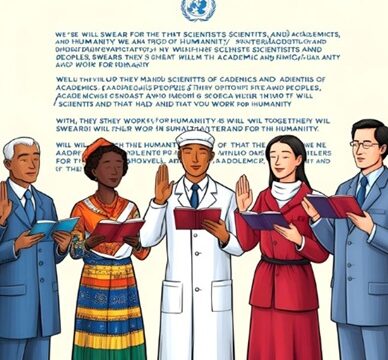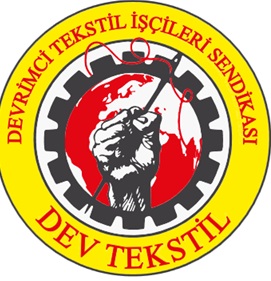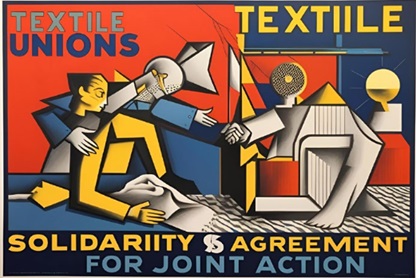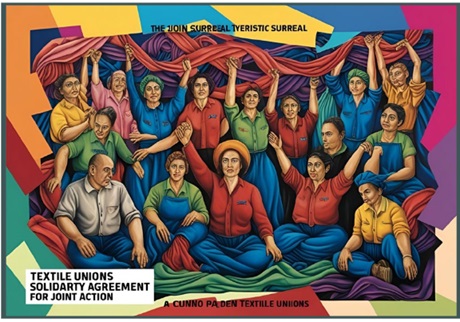Pape Mawade SYLLA
Laboratoire d’Études et de Recherches sur les Traditions et la
Modernité dans les Pays de Langue Anglaise (LERPLA)
Département d’Études Anglophones
Université Cheikh Anta Diop, Dakar, Sénégal
docsylla@outlook.com
Abstract: The integration of artificial intelligence (AI) into various fields has been rapidly increasing in recent years. Such field are also language and literature, where AI is being utilized to analyze and even create literary works. This paper explores the integration of Artificial Intelligence (AI) in language and literature in particular or education in general. AI is a rapidly growing field that has significant implications for the literary world. It analyzes the ways in which AI has been used in the creation, analysis, and interpretation in education or literature. It discusses the impact of AI on education, exploring its various applications and analyzing it in a critical view of such integration. By exploring these aspects, this research article contributes to a deeper understanding of the potential transformative effects of AI on education.
Keywords: Artificial Intelligence, Awareness, Education, Language, Literacy World, Human Creativity,
Introduction
Artificial Intelligence refers to the development of computer systems that can perform tasks that typically require human intelligence. This includes learning from experience (machine learning), understanding natural language, recognizing patterns, and making decisions. AI is a multidisciplinary field that encompasses various approaches, including machine learning and natural language processing etc. The rapid development of artificial intelligence (AI) and machine learning technologies has had a profound impact on all aspects of human life. Scholars, critics or creators pointed out that AI will have a profound impact on the fields of creative production and language expression through continuous iteration (Singh & Malviya 2023). Tools like AI driven writing assistants and text generators providing new methodologies for analyzing themes, styles, and historical contexts. By integrating AI into the creative and critical processes, language and literary field are encountering new paradigms of textual production and evaluation. To have an overview of how AI is transforming these aspects of literature, emphasizing the need to understand its implications fully a behaviorist and socio constructivist view will be adopted to deal with first the impact of AI on education and second deal with it in a critical perspective.
- Impact of AI on education
Today in the world of language and literature we assist to a transformative impact of AI on them. AI algorithms can generate human-like text, aiding in the creation of articles, essays, and other written content. This technology is often used for content marketing, journalism, and even creative writing. Grammar and style checkers, help writers improve their writing by identifying grammatical errors, suggesting corrections, and providing style recommendations. These tools enhance the overall quality of written language too. In language we assist to the advancement of machine translation systems, allowing for more accurate and context-aware translation between languages. This impacts the accessibility of literature across diverse linguistic communities. In terms of education, AI-powered educational platforms offer personalized learning experiences for students studying English literature. These platforms may adapt content, provide feedback, and offer additional resources based on individual learning needs also educational applications use AI to assess individual strengths and weaknesses, adapting lessons to cater to each learner’s needs. Search engines like Google use AI to improve the accuracy and context-sensitivity of search results. On top of that, the accessibility to more content on language or literature is enhanced. With AI there are more and more abilities to digital libraries and Archiving: it enables digitization, organization, and preservation of literary texts, contributing to the development of digital libraries and archives. Natural Language Processing (NLP)[1] which is a branch of AI that focuses on the interaction between computers and human language permits machines to understand, interpret, and generate human-like text. Application such as Chatbots and virtual assistants use NLP to understand and respond to user queries in natural language. In the field of translation, we assist to Machine Translation; AI-powered machine translation systems use algorithms to translate text from one language to another. Online translation services, such as Google Translate, employ AI to provide quick and relatively accurate translations between multiple languages. Furthermore, Language Learning Platforms are integrated into language learning platforms to personalize learning experiences and provide adaptive feedback. Applications such as Duolingo use AI to tailor language lessons based on individual progress and learning styles.
In the domain of literature, AI contributes to making literary content more accessible. Text-to-speech systems, for example, allow individuals with visual impairments to engage with literary works through spoken words. Some AI models are trained to generate creative writing, including poetry, short stories, and novels. AI-generated content raises questions about the role of machines in artistic expression and challenges traditional notions of authorship. About Literary Analysis and Research: AI facilitates large-scale analysis of literary corpora, enabling researchers to explore trends, historical changes in language use, and authorship attribution. Some AI models have been trained to generate poetry, stories, and even entire novels. While the creativity of AI-generated literature is still debated, it raises intriguing questions about the intersection of technology and artistic expression. AI tools can analyze literary works to identify patterns, themes, and character traits. This can aid in literary analysis, helping scholars and students gain insights into the structure and meaning of texts. We can analyse the feeling expressed in written text, including literature. This capability is useful for understanding the emotional tone of literary works, book reviews, and other written expressions. A critical perspective or in another words questioning the use of AI on education which may have positive and negative impact is essential to know how education can be reshaped.
- A Critical Perspective of AI on Education
One of the key concerns is the question of intellectual property and authorship. As AI systems generate texts, it becomes challenging to determine the rightful ownership and attribution of the work. This raises questions about copyright, plagiarism, and the recognition of human creativity in a landscape where AI plays a significant role. Another important ethical consideration is the presence of bias in AI-generated literature. AI models are trained on existing data, which may contain biases inherent in society. This can result in AI-generated texts reflecting and perpetuating these biases, potentially reinforcing stereotypes or marginalizing certain groups. It is crucial to address these biases and ensure fairness and inclusivity in AI-generated literature. Furthermore, there is a broader ethical concern regarding the impact of AI on the role of human authors and the preservation of human creativity. While AI can assist in the creative process, there is a risk of diminishing the role and value of human authors. It is important to find a balance between AI generated content and the unique perspectives, emotions, and experiences that human authors bring to their work. Overall, addressing these ethical considerations is essential to ensure the responsible and ethical integration of AI in literature. This involves developing frameworks and guidelines to navigate issues of ownership, and, the relationship between AI and human creativity, while striving for fairness, inclusivity, and the preservation of the education framework. For that reason, some scholars like P. Aghion and P. Howitt, (1990) talk about “Creative destruction” which refers to the process in which economic growth and technological innovation promote industrial transformation, often leading to the elimination of old industries and the emergence of new industries.
Further J. Bessen (2018) indicate more deeply about the role of “creative destruction” in the context of technological innovation, focusing on the impact of artificial intelligence on work. He believes that understanding the “creative destruction” process is critical to understanding how AI technologies will shape the future of content creation. He also highlights what policymakers and scholars should pay attention to that and it may change the popular culture and educational models in the age of artificial intelligence. He further suggested that adapting to the mass culture and educational models of the new era may be the potential driving force for the whole society to keep up with the times. S. L Vargo and W. J. Hopp (2016) extend the notion of “creative destruction” in the context of service-dominant logic, emphasizing both positive and negative implications in an evolving economic landscape for understanding value. This phenomenon may imply that with the continuous advancement of AI, industries related to literature and content creation may first enter the stage of being “destroyed” by AI. At the same time, these industries will also be the first to adapt to the impact of new technologies, so as to take the lead in the next stage of development.
Conclusion
As a conclusion one can notice that the impact of AI in all domain and particularly on education has tremendous impacts that are in one side very disastrous and in another side as a useful tool to shape the future of content creation. A critical perspective in the use of AI technology on education confirmed that it may be a “creative destruction” if it is not used adequately. In this way a balanced integration of AI in literature, where human creativity remains at the forefront while embracing the potential benefits that AI offers. By fostering collaboration, education, and empowerment, we should encourage a future where human authors and AI work together as stated by (Agalya et al. 2023); as synergistically, pushing the boundaries of literary expression while preserving the unique contributions of human creativity.
References
Aghion, P., & Howitt, P. (1990). A model of growth through creative destruction. The Quarterly Journal of Economics, 107(4), 1403-1430.
Alvarado, R. C. (2011). “Science Fiction as Myth: Cultural Logic in Gibson’s Neuromancer.” In Science Fiction and Computing: Essays on Interlinked Domains, edited by David L. Ferro, and Eric S. Swedin, 205–213. London: McFarland
Amigoni, David. (2007). Colonies, Cults and Evolution: Literature, Science and Culture in Nineteenth-Century Writing. Cambridge: Cambridge University Press.
Andringa, Els, and Margrit Schreier. (2004). “How Literature Enters Life: An Introduction.” Poetics Today 25 (2): 161–169. doi: 10.1215/03335372-25-2-161.
Bessen, J. (2018). AI and Jobs: The role of demand (No. w24235). National Bureau of Economic Research.
Browne, M. (2022). The Role of AI in Modern Literary Criticism. Journal of Literary Studies, 14(2), 115-132. https://doi.org/10.1080/12345678.2022.1 234567.
Bubeck, S., Chandrasekaran, V., Eldan, R., Gehrke, J., Horvitz, E., Kamar, E., … & Zhang, Y. (2023). Sparks of artificial general intelligence: Early experiments with gpt-4. arXiv preprint arXiv:2303.12712.
Dachs, B., Hud, M., Koehler, C., & Peters, B. (2017). Innovation, creative destruction and structural change: firm-level evidence from European countries. Industry and Innovation, 24(4), 346-381.
Foster, R. N. (1986). Innovation: The attacker’s advantage. Summit Books.
Hesmondhalgh, D. (2013). The cultural industries. SAGE.
Hugenholtz, P. B., & Quintais, J. P. (2021). Copyright and artificial creation: does EU copyright law protect AI-assisted output?. IIC-International Review of Intellectual Property and Competition Law, 52(9), 1190–1216.
Moretti, F. (2013). Distant reading. Verso Books.
Patel, S. (2021). AI and the Future of Creative Writing: Opportunities and Challenges. In Proceedings of the International Conference on Digital Humanities (pp. 67-76). ACM
Radford, A., Narasimhan, K., Salimans, T., & Sutskever, I. (2018). Improving language understanding by generativepre-training. OpenAI Blog. https://openai.com/blog/language-unsupe rvised/
Raj, Agalya, Udayakumar, U., Saravanan, D. (2023). Integrating Artificial Intelligence in English Literature: Exploring Applications, Implications, and Ethical Considerations. International Journal of Advanced Research in Science, Communication and Technology (IJARSCT). Volume 3, Issue 1,
Vargo, S. L., & Hopp, W. J. (2016). Service-dominant logic: What it is, what it is not, what it might be. In The service-dominant logic of marketing: Dialog, debate, and directions (pp. 43– 56). Routledge.
Wang, M. J. Munro, Computer-based training for learning English vowel contrasts. System. vol. 32 (2004) 539-552.
[1] Cole Stryker, AI models :https://www.ibm.com/think/topics/natural-language-processing#:~:text=Natural%20language%20processing%20(NLP)%20is,and%20communicate%20with%20human%20language.











